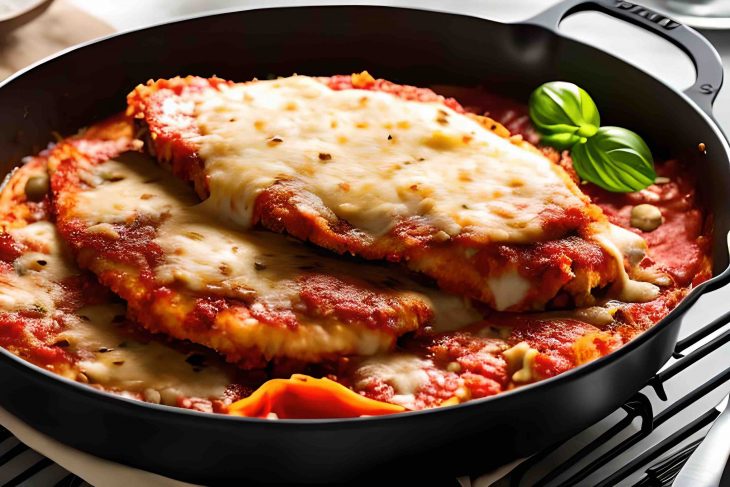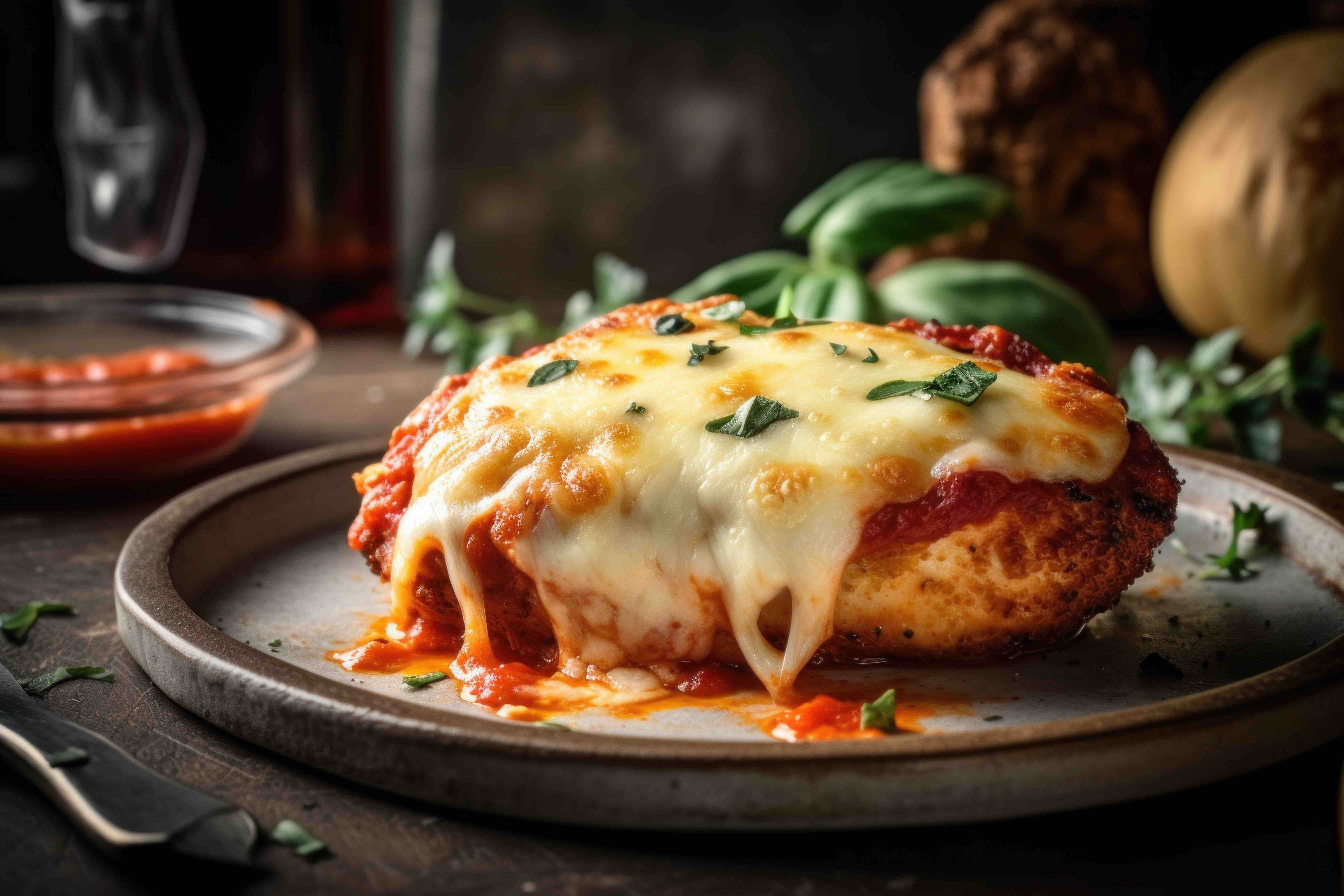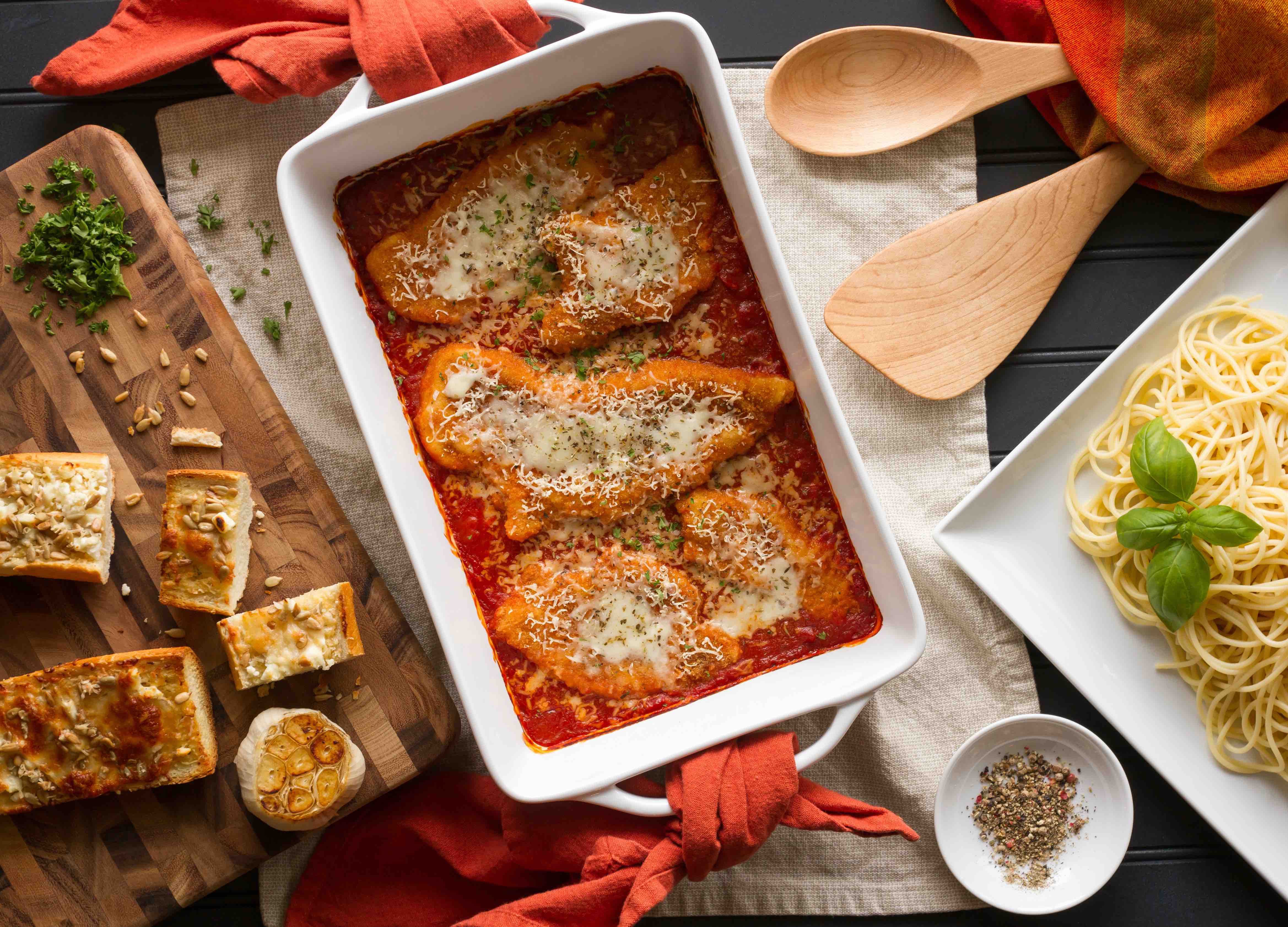
When it comes to comforting and satisfying meals, Chicken Parmesan holds a special place in the hearts of many food enthusiasts. The combination of crispy breaded chicken, flavorful marinara sauce, and melted cheese is undeniably delicious. But have you ever wondered about the nutritional value of this beloved dish? In this article, we present 12 insightful chicken parm nutrition facts that will showcase how this classic recipe can be a flavorful and nutritious addition to your menu.
Protein Powerhouse
Chicken Parmesan is an excellent source of protein. The chicken breast, the star of this dish, is a lean meat that provides essential amino acids for muscle growth, repair, and overall health. A single serving of Chicken Parmesan can provide a significant amount of your daily protein requirements.
Vitamin B Boost
Chicken Parmesan contains several B vitamins that play a vital role in energy metabolism. These vitamins, including niacin, vitamin B6, and vitamin B12, help convert food into usable energy, support brain function, and contribute to the health of your nervous system.
Mineral Richness
This dish also offers a range of important minerals. The chicken provides essential minerals like phosphorus and selenium, which are crucial for bone health and immune function, respectively. Additionally, the marinara sauce, often made with tomatoes, contributes to the dish’s mineral content by providing potassium and manganese.
Calcium from Cheese

The melted cheese topping in Chicken Parmesan adds a creamy and indulgent touch to the dish. It also brings a dose of calcium, which is essential for strong bones and teeth. Calcium also plays a role in muscle function and supports proper nerve transmission.
Fiber from Whole Grain Breadcrumbs
To achieve the perfect crunchy coating, Chicken Parmesan is often breaded with breadcrumbs. Opting for whole-grain breadcrumbs can add a healthy dose of fiber to your dish. Fiber promotes healthy digestion, helps maintain a feeling of fullness, and supports heart health.
Antioxidant-Rich Marinara Sauce
The tangy and flavorful marinara sauce in Chicken Parmesan is not only delicious but also provides a variety of antioxidants. Tomatoes, the base of many marinara sauces, are rich in lycopene, a powerful antioxidant associated with heart health and reduced risk of certain cancers.
Portion Control Consideration
While Chicken Parmesan offers nutritional benefits, it’s important to note that portion size plays a significant role. This dish can be calorie-dense, especially when served with pasta or a side of garlic bread. Practicing portion control and pairing it with lighter sides can help maintain a balanced meal.
Healthier Cooking Methods
Chicken Parmesan can be prepared in different ways to accommodate varying dietary preferences. While the traditional recipe involves breading and frying the chicken, you can opt for healthier cooking methods like baking or air frying. These methods reduce the amount of added fats while still achieving a crispy exterior.
Lighter Cheese Options
For those looking to reduce the calorie and fat content of Chicken Parmesan, there are lighter cheese options available. Choose low-fat mozzarella or opt for a blend of reduced-fat cheeses to maintain the melty goodness while cutting back on saturated fat.
Homemade Sauce Control
Making your own marinara sauce gives you control over the ingredients and allows you to customize the flavor to your liking. By using fresh tomatoes, herbs, and spices, you can create a homemade sauce that is lower in added sugars and sodium compared to store-bought varieties.
Creative Ingredient Substitutions

Chicken Parmesan is a versatile dish that can accommodate various dietary preferences and restrictions. You can experiment with gluten-free breadcrumbs or almond flour for a gluten-free version, or use eggplant or tofu instead of chicken for a vegetarian twist. These substitutions offer different nutritional profiles and cater to a wider range of diets.
Balanced Meal Pairing
To make Chicken Parmesan a part of a well-rounded meal, consider pairing it with a generous serving of vegetables. Serve it over a bed of steamed broccoli or alongside a fresh green salad to add fiber, vitamins, and minerals. This will help balance the nutrient content of your meal and increase its overall healthfulness.
Final Word
In conclusion, Chicken Parmesan offers more than just delicious flavors—it also provides valuable nutrients. From the protein-packed chicken to the vitamins and minerals found in the dish’s components, Chicken Parmesan can be a nutritious addition to your menu. By making mindful ingredient choices, exploring healthier cooking methods, and incorporating a variety of sides, you can enjoy this classic dish while maintaining a balanced and wholesome diet. So go ahead, savor the flavors and reap the nutritional benefits of Chicken Parmesan.
Frequently Asked Questions (FAQs)
Can I use skinless chicken thighs instead of chicken breasts in Chicken Parmesan?
Yes, you can use skinless chicken thighs as an alternative to chicken breasts. Keep in mind that thighs have a slightly higher fat content, which can result in a richer and juicier texture.
Is it possible to make a healthier version of Chicken Parmesan?
Absolutely! You can make a healthier Chicken Parmesan by opting for leaner cuts of chicken, using whole grain breadcrumbs, baking instead of frying, and reducing the amount of cheese or choosing lighter cheese options. Additionally, serving it with a side of vegetables or a salad adds more nutrition to the meal.
How can I reduce the sodium content of Chicken Parmesan?
To reduce the sodium content, choose low-sodium or no-added-salt marinara sauce and limit the amount of salt added during the cooking process. You can also use herbs, spices, and other flavorings to enhance the taste without relying heavily on salt.
Can I freeze Chicken Parmesan for later consumption?
Yes, you can freeze Chicken Parmesan for later consumption. Prepare the dish as usual, allow it to cool, and then wrap it tightly in foil or place it in an airtight container. It can be frozen for up to three months. Thaw it in the refrigerator overnight before reheating.
Is Chicken Parmesan suitable for individuals following a gluten-free diet?
Chicken Parmesan can be made gluten-free by using gluten-free breadcrumbs or alternatives like almond flour or crushed gluten-free crackers. Be sure to check the labels of all ingredients used to ensure they are free from gluten or gluten contamination.
Was this page helpful?
Our commitment to delivering trustworthy and engaging content is at the heart of what we do. Each fact on our site is contributed by real users like you, bringing a wealth of diverse insights and information. To ensure the highest standards of accuracy and reliability, our dedicated editors meticulously review each submission. This process guarantees that the facts we share are not only fascinating but also credible. Trust in our commitment to quality and authenticity as you explore and learn with us.


